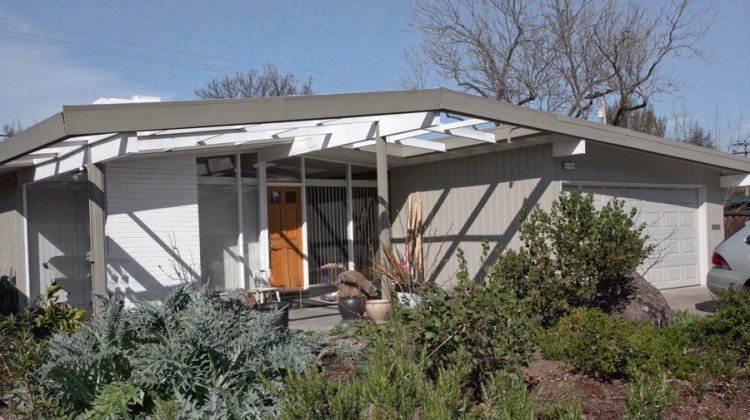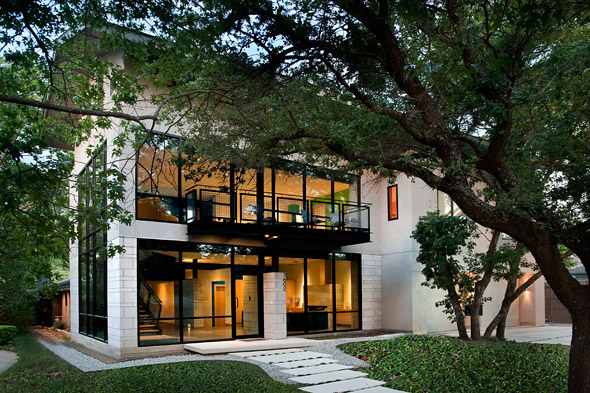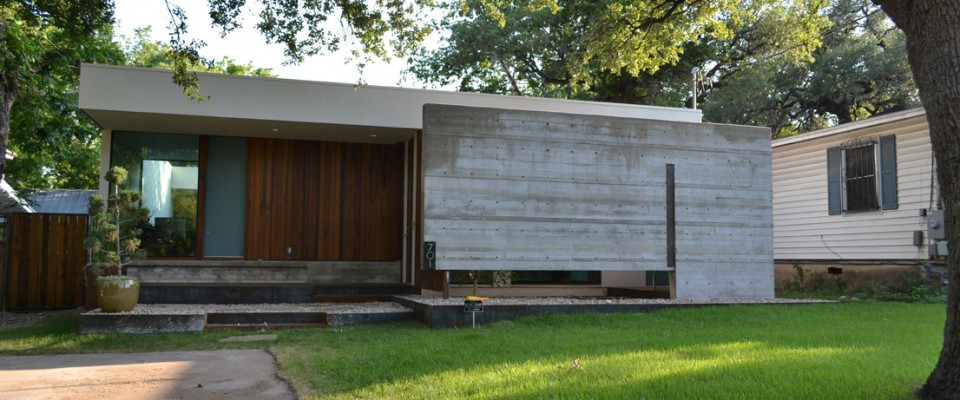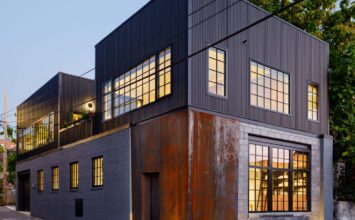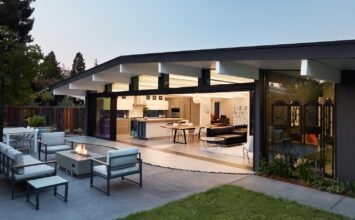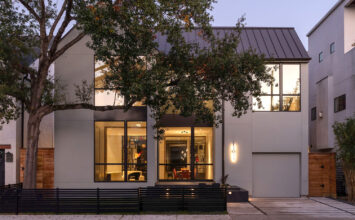By Ingrid Spencer
Ingrid Spencer curates the Austin Modern Home Tour. She is a contributing editor for Architectural Record magazine and the co-director of the Waller Creek Conservancy’s Creek Show, a series of architecture installations soon to appear along Waller Creek as part of an urban redevelopment project in central Austin.
How did the house you grew up in affect your design sense and how you live as an adult? That’s the question I asked four of my childhood friends who grew up in the 1970s and 1980s in houses developed by Joseph Eichler in Sunnyvale, California. The question came to mind after reading Steve Jobs’ biography by Walter Isaacson. Steve Jobs and Steve Wozniak both grew up near where I did in Mountain View, California (and both went to my high school, Homestead High School. Go Mustangs!), and though it turns out Jobs’s childhood home was a “likeler”—the local term for a house designed by Anshen and Allen that closely resembled an Eichler—the house had most of the same design elements. In the book, Jobs states his appreciation for what Joseph Eichler did. “The houses were smart and cheap and good,” Isaacson quotes him as saying. “They brought clean design and simple taste to lower-income people. They had awesome little features, like radiant heating in the floors…I love it when you can bring really great design and simple capability to something that doesn’t cost much. It was the original vision for Apple. That’s what we tried to do with the first Mac. That’s what we did with the iPod.”

- Steve Jobs grew up in this Eichleresque “likeler” house on Diablo Ave. in Mountain View, California. Credit: Courtesy of David Toerge
Eichler enthusiasts point a firm finger at this example of residential environment gently but steadfastly influencing a future design sensibility over time—modern house as design incubator. According to the friends I surveyed, there is truth to the theory. “Without question, growing up in an Eichler informed my design sense,” says Agna Ostoya Brayshaw, a public relations specialist now living in the Washington Heights area of Brooklyn, New York. “To this day I love mid-century modern design. Being in homes without light from floor-to-ceiling glass makes me claustrophobic and feel closed in. I prefer ranch style single story homes to multi-storied ones, unless the transition between floors is open and gradual. I appreciate design that blurs the line between outdoors and indoors and moves fluidly between the two like the glass walls did in our home growing up. Also, I have to have skylights now as an adult.” Agna’s brother Jacek, an architect living in Los Angeles, agrees. “Growing up in an Eichler affected my design sense most importantly by showing me the importance of natural light in architecture and interior design,” he says. “Light affects the feel of a space, how we perceive height and volume, changes textures of surfaces, impacts our mood. I grew up thinking it was totally natural to live in a space with entire walls of glass that let in light and by extension brought the outdoors inside to create a truly West Coast style of living. I would go to friends’ non-Eichler traditionally designed houses and feel uncomfortable, closed in by all the compartmentalized rooms and the darkness of the spaces. The open plan of our Eichler also helped shape my modern sensibilities about architecture and design. The spaces created by an open plan made the house feel larger than it was and imbued the space with a sense of optimism and oneness with the nature outside.”

- Christina Hays took this photo of her sister and her dad in front of their Eichler in 1974. The house, in Sunnyvale, California, was built in 1967.
Christina Hays, an occupational therapist who currently lives in an Eichler home in Palo Alto, California, says it was the décor in the spaces as well as the architecture that affected her. “I think what was ultimately influential was living with “modern” Scandinavian furniture versus living with things more obstructive and traditional. It kills me to see Eichlers where the owners work so hard to fight the elements that make the design unique. Take down those drapes! I feel like I continuously work at minimizing my home. I never thought it would cost so much to live with less.”
Vivian Christensen, who lives in Portland, Oregon and works as a research investigator for the Veterans Health Administration, reiterates the importance of being true to the original design of a house. “There is nothing worse than when a homeowner tries to change the look of their Eichler into something else.” She says. “An Eichler dressed up as a Tuscan villa is no good.”
To Be Continued…
